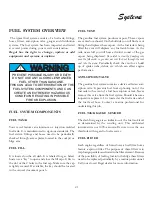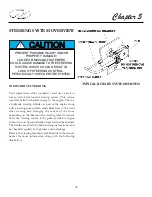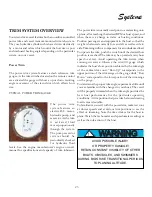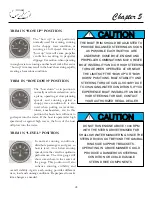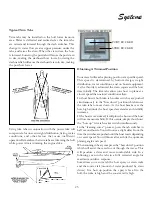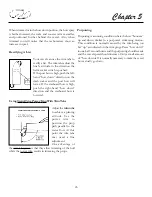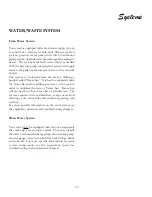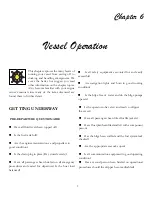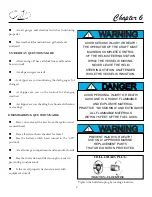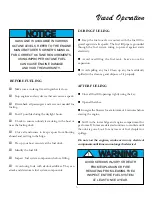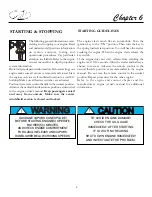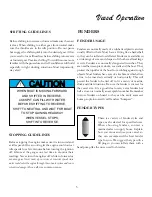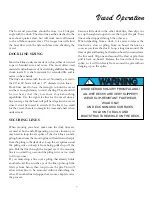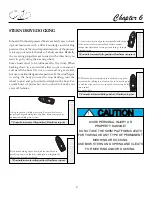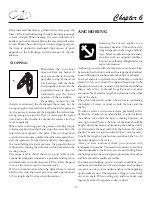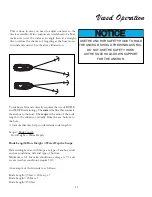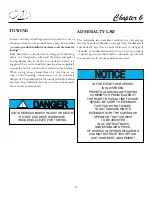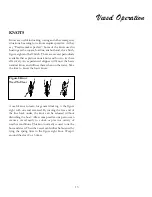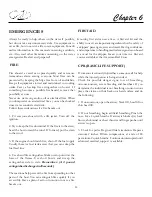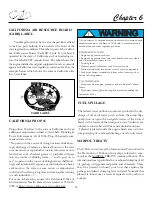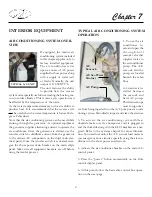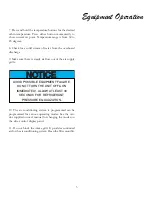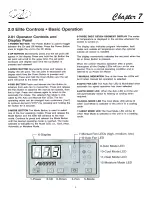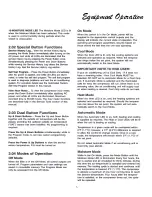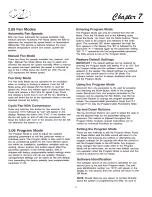
7
Vessel Operation
The bow and stern lines should be close to a 45 degree
angle with the dock. The stern line can be attached to the
near-shore quarter cleat, but will work more efficiently
to the offshore quarter cleat. The longer line will allow
the boat flow with the tide with less time checking the
vessel.
DOCK LINE SIZING
Most dock lines today are made of nylon, either of twisted
rope or braided core and cover. The most often used
material is nylon because of its stretching abilities absorbing
shock loads. It is chafe resistant for extended life and is
easier on bare hands.
The line’s size varies with the vessel. Normally, a vessel in
the 20’ to 40’ boats will use 1/2” diameter nylon lines.
Dock lines need to have the strength to hold the vessel
and have enough density to resist chafing. They shouldn’t
be too heavy that they lose their shock-absorbing
capabilities. Use the right size line for the vessel since a
line too large for the boat will pull hard against the vessel
since it won’t be forced to stretch. If the line is too small
for the vessel, there is no margin for wear and chafe when
under strain
SECURING LINES
When mooring your boat, make sure the dock lines are
secured at both ends. Depending on your situation you
may need to loop the eye splice of the dock line around a
piling. Sometimes the mooring line will lead down sharply
from the piling to the deck cleat. Loop the eye splice around
the piling twice to keep it from being pulled up off the
pile. Pull the line through the looped eye if the mooring
line is too small to go around the piling twice or too small
to fit over once.
If you must drop a line over a piling that already holds
another boat’s line, run the eye of the line up through the
first eye from below, then loop it over the pile. This will
allow either line to be removed without disturbing the
other. If another line is dropped over yours, simply reverse
the process.
Secure a little slack in the other dock line, then slip your
eye up through its loop and over the top of the pile. Your
line can be dropped through the other eye.
When debarking from a dock, it is easier to release the
line from a cleat or piling, from on board the boat, as
soon as you leave the dock. Loop a long line around the
cleat or pier and leading both ends on board you can release
the line easily. Slip one end around the cleat or pile, then
pull it back on board. Release the line without the eye
splice, so it will run freely from around the pile without
hanging up on the splice.
AVOID SERIOUS INJURY FROM FALLING!
ALL WET DECKS ARE VERY SLIPPERY!
WEAR SLIP-RESISTANT FOOTWEAR,
WALK ONLY
ON DECK NON-SKID SURFACES.
HOLD ON TO RAILS AND
BOAT STRUCTURE WHILE ON THE DECK.
WARNING
!
Summary of Contents for 30 EXPRESS
Page 1: ...30 EXPRESS OWNER S MANUAL...
Page 2: ...784022 OWNER S MANUAL 30 EXPRESS 12 2012...
Page 30: ...11 Safety On Board NAVIGATION LIGHT RULES...
Page 41: ...Chapter 2 22 Notes...
Page 44: ...3 Rules Of The Road NAVIGATION RULES...
Page 85: ...28 Chapter 5 Notes...
Page 105: ...4 Chapter 7...
Page 106: ...5 Equipment Operation...
Page 107: ...6 Chapter 7...
Page 108: ...7 Equipment Operation...
Page 109: ...8 Chapter 7...
Page 110: ...9 Equipment Operation...
Page 111: ...10 Chapter 7...
Page 117: ...16 Chapter 7...
Page 126: ...25 Equipment Operation ROTARY ENCODER AND MENU KEY...
Page 127: ...26 Chapter 7 USING THE ROTARY ENCODER AND MENU KEY...
Page 158: ...57 Equipment Operation BACKING A TRAILER 1 2 3 4 LAUNCHING RAMP...
Page 161: ...60 Chapter 7 Notes...
Page 195: ...34 Chapter 8 Notes...
Page 204: ...9 Troubleshooting TOILET SYSTEM DIAGNOSTIC CHART...
Page 209: ...14 Chapter 9...
Page 219: ...6 Chapter 11 Notes...
Page 221: ...2 Chapter 12...
Page 224: ...5 Technical Information 30 Express Deck Overview 30 Express Cabin Overview...
Page 225: ...Technical Information 12 6 30 EXPRESS...
Page 226: ...12 7 Technical Information 30 EXPRESS...
Page 227: ...Technical Information 12 8 30 EXPRESS...
Page 228: ...12 9 Technical Information 30 EXPRESS...
Page 229: ...Technical Information 12 10 30 EXPRESS 30 EXPRESS...
Page 230: ...12 11 Technical Information TYPICAL NEGATIVE GROUND SYSTEM...
Page 231: ...Technical Information 12 12 30 EXPRESS...
Page 232: ...12 13 Technical Information 30 EXPRESS...

